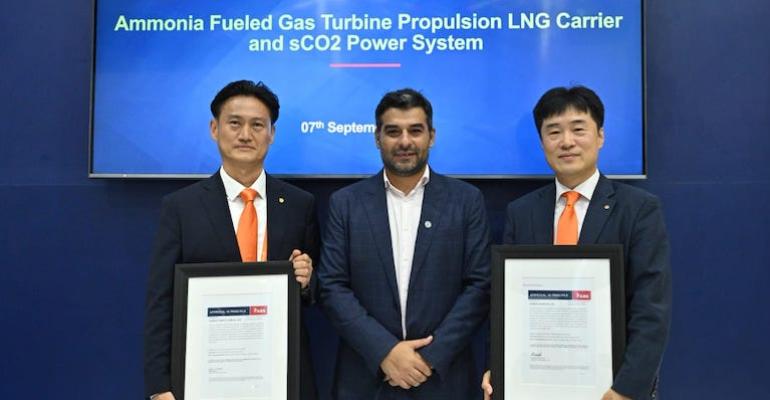ABS has issued the AiP to South Korean shipbuilder Hanwha Ocean for an LNG carrier design equipped with an ammonia-fueled gas turbine.
The design, if it is ever built, would see the construction of the first emission free LNG carrier. The 174,000 cu m LNG carrier would be able to use ammonia and natural gas separately or simultaneously as fuel, and if only ammonia is used there would be no CO2 emissions.
The design also incorporates Hanwha Power Systems’ exhaust gas waste heat recovery system (sCO2 Power System).
“With a global focus on decarbonisation, this vessel design represents a big step forward in the shipping industry’s ambitions for zero-carbon cargo transport,” said Panos Koutsourakis, ABS Vice President, Global Sustainability.
A spokesperson from Hanwha Ocean said: “Carbon neutrality is a ‘challenge to be overcome’ and an ‘opportunity to leap’ for shipyards. With this AIP, we will lead the competition for carbon-free ships.”
It would not be the first zero emission vessel for carrying fossil fuels. Late last month China Merchants Energy Shipping (CMES) ordered what is claimed to be the first methanol dual-fuel VLCC at a shipyard in Dalian.
There are a number of ammonia dual-fuel bulk carrier designs at various stages of development, vessels which would potentially carry coal as a cargo.
Copyright © 2024. All rights reserved. Seatrade, a trading name of Informa Markets (UK) Limited.
Add Seatrade Maritime News to your Google News feed.  |

